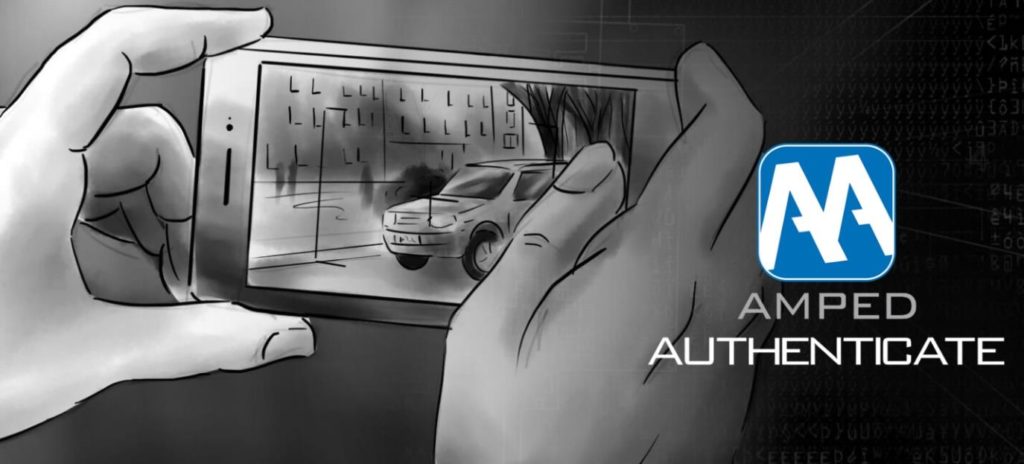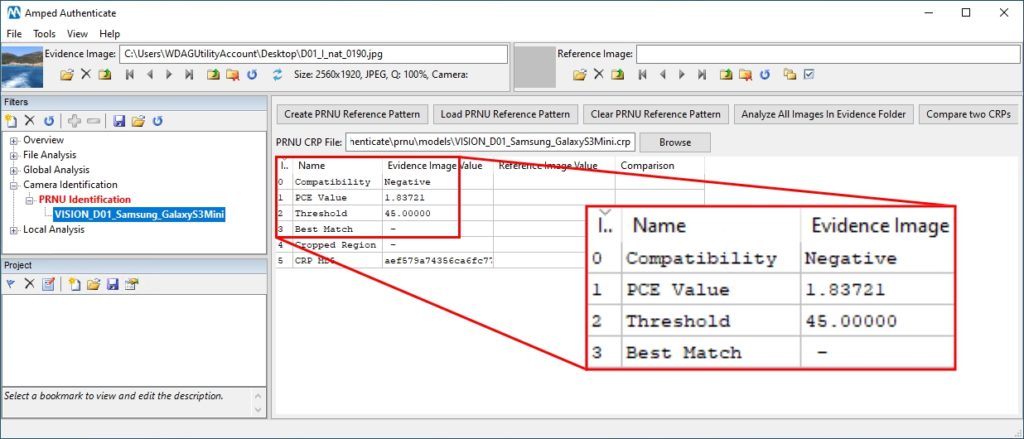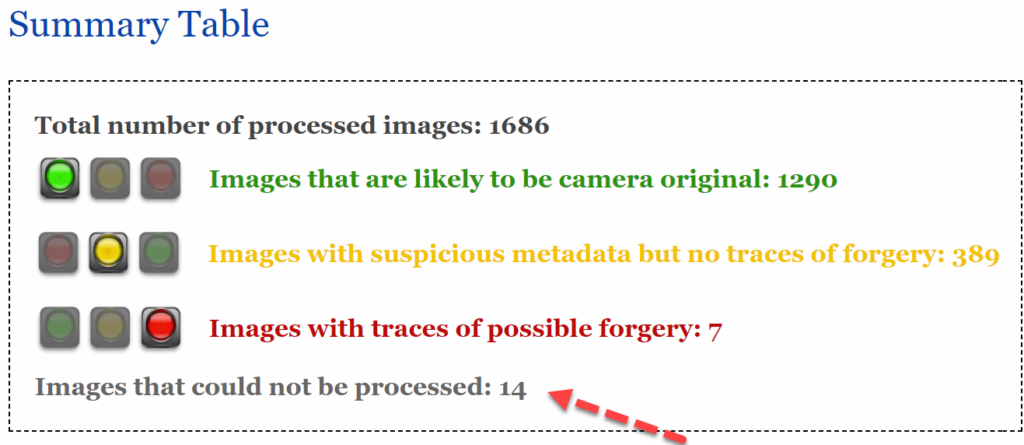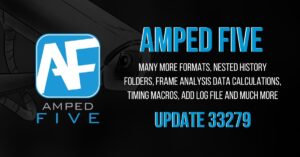Notwithstanding the disquieting COVID-19 emergency that is severely hitting the world, Amped engineers are lucky enough to continue working (from home), and so we are proudly delivering a new update to Amped Authenticate! Keep reading to discover what’s new.

Improved PRNU Identification Matching
The PRNU Identification is one of Amped Authenticate’s most attractive filters, with its ability to link an image to the source device that produced it. One of the key performance indicators for source identification algorithms is robustness: will they find a match even if the image has been downscaled, compressed, or cropped?
Amped Authenticate’s PRNU Identification was already supporting a wide variety of processing: it would usually find the match even if the evidence image had been cropped (even by large amounts), downscaled, upscaled or re-compressed by reasonable amounts, or rotated by multiples of 90 degrees. But one thing that was not supported was simultaneous down/up-scaling and cropping. “Not a big deal!”, I guess you’re thinking. But, as it turns out, up-scaling combined with cropping is just what happens when you capture an image using digital zoom, which is very common with smartphones (you just need to pinch the display). When the digital zoom is enabled, the image is obtained by taking a sub-part of the camera sensor and then resizing pixels to match the desired output resolution. In such cases, previous releases of Amped Authenticate would fail to find a positive match between the captured image and the corresponding device’s Camera Reference Pattern (CRP).
For example, in the publicly available and largely used VISION dataset, there’s an image that was captured with digital zoom (by mistake, I guess). As such, when you tested it with Amped Authenticate you obtained “Negative” compatibility:

And now? Now it works! If you run the latest version of Amped Authenticate and select the PRNU Identification filter, you’ll notice a brand new section in the interface:

Users can now configure an Advanced Settings File. It lets you enable and customize a more in-depth searching strategy, that will iteratively resize the evidence image and test it against the CRP. Doing so, if the image underwent both resize and crop, you may be able to:
- Detect a positive match;
- Find the amount of resizing that yielded the match, which reveals further information about the image processing history.
Depending on how it’s configured, such an iterative search can be time-consuming for large images (enabled with the default settings, it takes roughly 4 minutes on a standard laptop for a 12-megapixel image); for this reason, it is not enabled by default.
The user can activate this new feature and configure the iterative search parameters clicking on the Edit button, which will open the file in the default text editor.

We’re not going into the details of the configuration here, it’s all explained in the Program Manual, however, the user can:
- enable/disable the advanced search;
- set the minimum and maximum scaling factor to be tested and the step to be used for spanning the interval;
- set a cutoff value that allows early termination of the search (if a PCE higher than this value is met, the search will stop as soon as the next decrease is observed);
- set which rigid (i.e., multiple of 90 degrees) rotations of the image should be tested;
- set a customized PCE threshold to lower the chance of false positives, which may turn handy since we’re running an iterative search (which evaluates billions of possible matching combinations) and picking the highest correlation score at each step. This makes it easier to obtain higher PCE values even for non-matching images, so caution should be taken when evaluating results.
Going back to our example, this is what we obtain by running PRNU Identification after enabling the advanced search:

As you can see, we’re now showing more details in the output table, including the scale factor for which the best correlation was obtained. The result we obtained suggests that the user had zoomed in by 1/0.77 ≈ 1.3 (hint: the Correlation Plot also confirms that resampling did occur on this image!)
Improved PRNU Identification Filtering
When extracting PRNU noise from images, the PRNU Identification filter now uses an improved filtering algorithm to reduce non-unique artifacts, that are, noise components that are not specific to the exact device, they are instead shared by many cameras. By filtering out these artifacts, we are reducing the chances of false positives.
While CRP files generated with previous versions of Amped Authenticate will still work, you may be getting different results using them with this new release. Should you need forensic soundness/reproducibility, you have to use the same software version employed at the time (it’s written on top of Authenticate’s reports!).
More Robust Batch Processing and Smart Report
Thanks to our attentive users, we realized that when running the Smart Report and Batch Processing tools over a set of files, the presence of some kind of problematic files could stop the processing. We thus reviewed the behavior of these tools: when a problematic file is encountered, it’s just skipped, and processing continues to the next image.
A list of problematic files is then provided at the end of the generated report (both when HTML or TSV format are selected), to allow users to review these files individually.

Updated JPEG Quantization Table Database
Amped Authenticate users know the potentiality of JPEG Quantization Tables (QT) analysis. Since different camera models tend to use different tables, we can use QTs to cross-check the make and model of the camera as declared in Exif metadata. When metadata are not available, QTs may still provide some advice about the brand/model of the originating device (provided the image has not been compressed). To do all of this, however, you need an extensive database that binds camera devices to the QTs they use.
With this update, we’ve added more than 1.000 new QTs to our database, which now counts 15888 tables, including those of very recent smartphones:

Digital Licensing
As recently announced, all Amped products are now delivered via Digital Licenses. You no longer have to wait for the USB dongle to be shipped, no need for a spare USB port on your computer, and, most importantly given the current situation, you can activate wherever you are as long as you have available seats on your license.
Other improvements/fixes
- Improved PRNU Identification caching system
- Improved error handling when loading problematic files
Don’t Delay – Update Today
If you have an active support plan you can update straight away by going into the menu Help>Check for Updates Online within Amped Authenticate. If you need to renew your SMS plan, please contact us or one of our authorized distributors. And remember that you can always manage your license and requests from the customer support portal.




